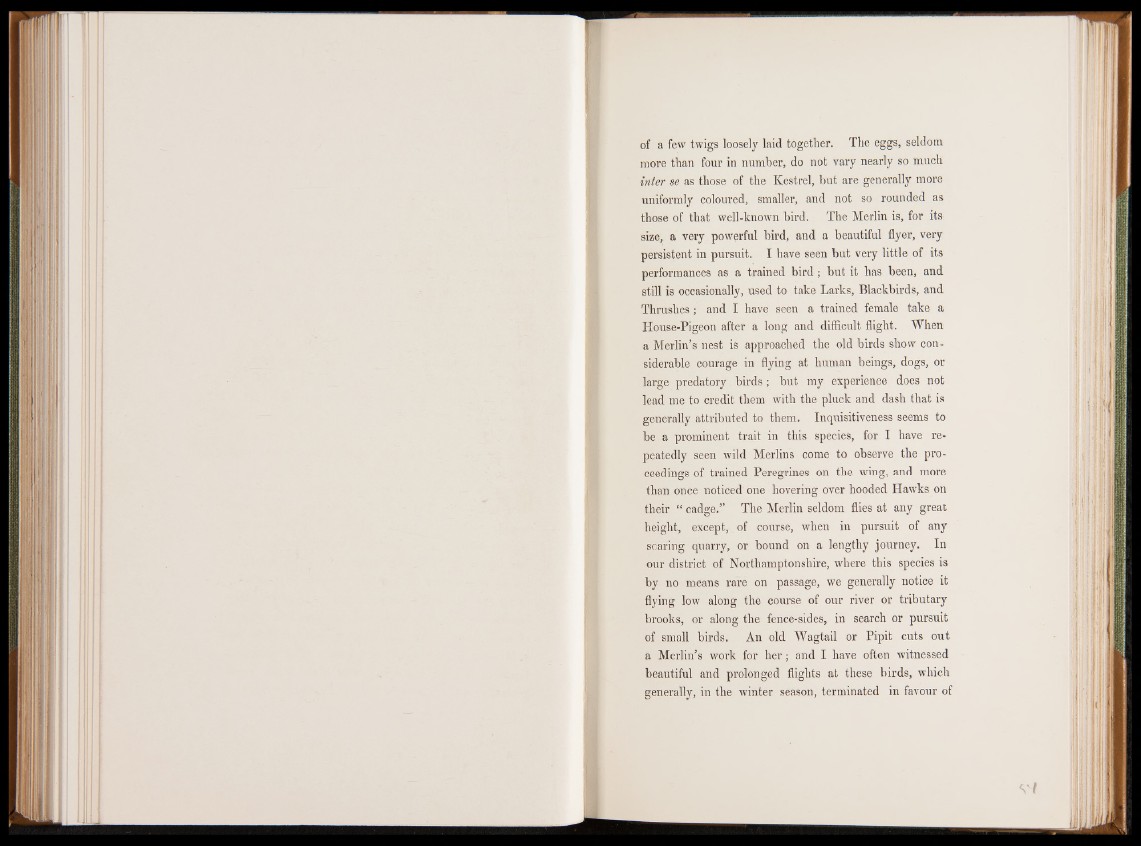
of a few twigs loosely laid together. The eggs, seldom
more than four in number, do not vary nearly so much
inter se as those of the Kestrel, but are generally more
uniformly coloured, smaller, and not so rounded as
those of that well-known bird. The Merlin is, for its
size, a very powerful bird, and a beautiful flyer, very
persistent in pursuit. I have seen but very little of its
performances as a trained bird; but it has been, and
still is occasionally, used to take Larks, Blackbirds, and
Thrushes; and I have seen a trained female take a
House-Pigeon after a long and difficult flight. When
a Merlin’s nest is approached the old birds show considerable
courage in flying at human beings, dogs, or
large predatory birds; but my experience does not
lead me to credit them with the pluck and dash that is
generally attributed to them. Inquisitiveness seems to
be a prominent trait in this species, for I have repeatedly
seen wild Merlins come to observe the proceedings
of trained Peregrines on the wing, and more
than once noticed one hovering over hooded Hawks on
their “ cadge.” The Merlin seldom flies at any great
height, except, of course, when in pursuit of any
scaring quarry, or bound on a lengthy journey. In
our district of Northamptonshire, where this species is
by no means rare on passage, we generally notice it
flying low along the course of our river or tributary
brooks, or along the fence-sides, in search or pursuit
of small birds. An old Wagtail or Pipit cuts out
a Merlin’s work for her ; and I have often witnessed
beautiful and prolonged flights at these birds, which
generally, in the winter season, terminated in favour of